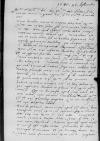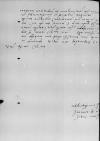 BCz, 1597, p. 1127
BCz, 1597, p. 1127
Reverendissime et Excellentissime Domine, domine gratiosissime.
Post debitam servitiorum meorum in gratiam Vestrae Reverendissimae Celsitudinis commendationem.
Nunc tandem animi et corporis dotes Vestrae Reverendissimae Celsituditds non noscere solum, sed vehementer admirari coepi, dum apud Charles V of Habsburg (*1500 – †1558), ruler of the Burgundian territories (1506-1555), King of Spain as Charles I (1516-1556), King of Naples and Sicily, King of the Romans (1519-1530), Holy Roman Emperor of the German Nation (elected 1519, crowned 1530, abdicated 1556); son of Philip I the Handsome and Joanna the Mad of Castile⌊caesaream catholicam maiestatemCharles V of Habsburg (*1500 – †1558), ruler of the Burgundian territories (1506-1555), King of Spain as Charles I (1516-1556), King of Naples and Sicily, King of the Romans (1519-1530), Holy Roman Emperor of the German Nation (elected 1519, crowned 1530, abdicated 1556); son of Philip I the Handsome and Joanna the Mad of Castile⌋ Sigismund I Jagiellon (Zygmunt I) (*1467 – †1548), King of Poland and Grand Duke of Lithuania (1506-1548); Duke of Głogów (Glogau) (1499-1506), Duke of Opava (1501-1506), Governor of Silesia (1504-1506); son of King Kazimierz IV Jagiellon and Elisabeth of Austria
Bona Sforza (*1494 – †1557), Queen of Poland and Grand Duchess of Lithuania (1518-1557); the second wife of Sigismund I Jagiellon; Duchess of Bari and Rossano; daughter of Gian Galeazzo Sforza of Milan and Isabella of Aragon⌊principumSigismund I Jagiellon (Zygmunt I) (*1467 – †1548), King of Poland and Grand Duke of Lithuania (1506-1548); Duke of Głogów (Glogau) (1499-1506), Duke of Opava (1501-1506), Governor of Silesia (1504-1506); son of King Kazimierz IV Jagiellon and Elisabeth of Austria
Bona Sforza (*1494 – †1557), Queen of Poland and Grand Duchess of Lithuania (1518-1557); the second wife of Sigismund I Jagiellon; Duchess of Bari and Rossano; daughter of Gian Galeazzo Sforza of Milan and Isabella of Aragon⌋ meorum nomine nuntium egi. Nemo enim est non in aula[1] solum, sed in omnibus Germany (Germania, Niemcy)⌊Superioris Inferiorisque GermaniaeGermany (Germania, Niemcy)⌋ partibus, qui virtutem, ingenium, doctrinam, humanitatem, eloquentiam, affabilitatem Reverendissimae Celsitudinis Vestrae infinitis laudibus non praedicet, et, ut ipsimet fatentur, nullum umquam fuisse et neque futurum oratorem, qui simile sui desiderium apud illos reliquerit. Infanda certe et immensa res, quae etiam humanam naturam superare videtur, tot tantisque placuisse viris, ut nullum sermonis et alloquendi sit omnibus argumentum, quam de valetudine et incolumitate Vestrae Reverendissimae Celsitudinis quaerere. Habent equidem Sigismund I Jagiellon (Zygmunt I) (*1467 – †1548), King of Poland and Grand Duke of Lithuania (1506-1548); Duke of Głogów (Glogau) (1499-1506), Duke of Opava (1501-1506), Governor of Silesia (1504-1506); son of King Kazimierz IV Jagiellon and Elisabeth of Austria
Bona Sforza (*1494 – †1557), Queen of Poland and Grand Duchess of Lithuania (1518-1557); the second wife of Sigismund I Jagiellon; Duchess of Bari and Rossano; daughter of Gian Galeazzo Sforza of Milan and Isabella of Aragon⌊principesSigismund I Jagiellon (Zygmunt I) (*1467 – †1548), King of Poland and Grand Duke of Lithuania (1506-1548); Duke of Głogów (Glogau) (1499-1506), Duke of Opava (1501-1506), Governor of Silesia (1504-1506); son of King Kazimierz IV Jagiellon and Elisabeth of Austria
Bona Sforza (*1494 – †1557), Queen of Poland and Grand Duchess of Lithuania (1518-1557); the second wife of Sigismund I Jagiellon; Duchess of Bari and Rossano; daughter of Gian Galeazzo Sforza of Milan and Isabella of Aragon⌋ nostri et totum Poland (Kingdom of Poland, Polonia)⌊Poloniae RegnumPoland (Kingdom of Poland, Polonia)⌋ ingentem laudem et gloriam Vestrae Reverendissimae Celsitudinis nomine. Ego me hic presto apud suas maiestates et totam aulam iustum preconem incredibilium laudum Reverendissimae Celsitudinis Vestrae praestaboque perpetuo. Cui me et observantiam meam perpetua<m> addico.
Dominus Nicolas Perrenot de Granvelle (*1484 – †1550), doctor of both canon and civil law, one of the most trusted advisors of Emperor Charles V, in 1519 entered the service of Charles V, in 1521 took part in the Habsburg-French negotiations in Calais, in 1529 in peace negotiations with the Roman Curia and the Italian states, and later, in 1538, in the conference of Nice between Charles V and Francis I; prominent official and advisor of Charles V and of Margaret of Austria in the administration of the County of Burgundy and of the Habsburg Netherlands, collaborator of Chancellor Gattinara, 1530 secretary of State for German and Netherlandish affairs and Chancellor of the Kingdom of Sicily and Naples (he replaced Gattinara after his death in the position of Grand Chancellor, although not using the title); imperial envoy to France (several times up to 1528) (CE, vol. 3, p. 68-70; DURME 1964; ANTONY 2006)⌊de Granvel(la)Nicolas Perrenot de Granvelle (*1484 – †1550), doctor of both canon and civil law, one of the most trusted advisors of Emperor Charles V, in 1519 entered the service of Charles V, in 1521 took part in the Habsburg-French negotiations in Calais, in 1529 in peace negotiations with the Roman Curia and the Italian states, and later, in 1538, in the conference of Nice between Charles V and Francis I; prominent official and advisor of Charles V and of Margaret of Austria in the administration of the County of Burgundy and of the Habsburg Netherlands, collaborator of Chancellor Gattinara, 1530 secretary of State for German and Netherlandish affairs and Chancellor of the Kingdom of Sicily and Naples (he replaced Gattinara after his death in the position of Grand Chancellor, although not using the title); imperial envoy to France (several times up to 1528) (CE, vol. 3, p. 68-70; DURME 1964; ANTONY 2006)⌋, primae auctoritatis apud Charles V of Habsburg (*1500 – †1558), ruler of the Burgundian territories (1506-1555), King of Spain as Charles I (1516-1556), King of Naples and Sicily, King of the Romans (1519-1530), Holy Roman Emperor of the German Nation (elected 1519, crowned 1530, abdicated 1556); son of Philip I the Handsome and Joanna the Mad of Castile⌊caesaream maiestatemCharles V of Habsburg (*1500 – †1558), ruler of the Burgundian territories (1506-1555), King of Spain as Charles I (1516-1556), King of Naples and Sicily, King of the Romans (1519-1530), Holy Roman Emperor of the German Nation (elected 1519, crowned 1530, abdicated 1556); son of Philip I the Handsome and Joanna the Mad of Castile⌋ homo, amicissime Vestram Reverendissimam Celsitudinem salutat seque ei commendat. Eius cf. Nicolas PERRENOT de Granvelle to Ioannes DANTISCUS Bruges, 1540-07-15, CIDTC IDL 2324⌊litterascf. Nicolas PERRENOT de Granvelle to Ioannes DANTISCUS Bruges, 1540-07-15, CIDTC IDL 2324⌋ Reverendissimae Celsitudini Vestrae mitto. René de Châlon (Renatus of Châlon) (*1518 – †1544), 1536-1544 prince of Orange; count of Nassau, stadtholder of Holland, Zeeland, Utrecht, and Guelders; son of Hendrik III of Nassau-Breda (CE, vol. 1, p. 291)⌊Princeps AranzeRené de Châlon (Renatus of Châlon) (*1518 – †1544), 1536-1544 prince of Orange; count of Nassau, stadtholder of Holland, Zeeland, Utrecht, and Guelders; son of Hendrik III of Nassau-Breda (CE, vol. 1, p. 291)⌋ Hendrik III of Nassau-Breda (*1483 – †1538), son of Count Johann V of Nassau-Dillenburg and Elisabeth of Hessen, married to Mencia de Mendoza, Marquess of Zenete, daughter and heiress of Rodrigo Díaz de Vivar y Mendoza, first Marquis of Zenete; Count of Nassau; from 1499 in the service of Archduke Philip of Habsburg as his advisor and military commander in the wars against France and Gueders (1507, 1514), 1515-1522 Stadtholder of Holland and Zeeland; 1521 Grand Chamberlain of Charles V of Habsburg (from 1522 to 1529 at the Spanish court), in 1530 followed Charles V to the coronation in Bologna, and attended the Diet of Augsburg (CE, vol. 3, p. 5)⌊comitis a NassauHendrik III of Nassau-Breda (*1483 – †1538), son of Count Johann V of Nassau-Dillenburg and Elisabeth of Hessen, married to Mencia de Mendoza, Marquess of Zenete, daughter and heiress of Rodrigo Díaz de Vivar y Mendoza, first Marquis of Zenete; Count of Nassau; from 1499 in the service of Archduke Philip of Habsburg as his advisor and military commander in the wars against France and Gueders (1507, 1514), 1515-1522 Stadtholder of Holland and Zeeland; 1521 Grand Chamberlain of Charles V of Habsburg (from 1522 to 1529 at the Spanish court), in 1530 followed Charles V to the coronation in Bologna, and attended the Diet of Augsburg (CE, vol. 3, p. 5)⌋ filius, Erardus de Buren ⌊comes de Bur(en)Erardus de Buren ⌋, probably Johan Cirksena (Johan I of East Frisia) (*ca. 1506 – †1572), son of Edzard I, Count of East Frisia, and Elisabeth von Rietberg; younger brother of Count Enno II Cirksena, from 1538 husband of Dorothea of Austria, illegitimate daughter of Emperor Maximilian I of Habsburg. Contrary to his father and brother, he remained Catholic; 1539 Stadtholder of Limburg (DODGE, p. 89-103)⌊comes von Fryzlandprobably Johan Cirksena (Johan I of East Frisia) (*ca. 1506 – †1572), son of Edzard I, Count of East Frisia, and Elisabeth von Rietberg; younger brother of Count Enno II Cirksena, from 1538 husband of Dorothea of Austria, illegitimate daughter of Emperor Maximilian I of Habsburg. Contrary to his father and brother, he remained Catholic; 1539 Stadtholder of Limburg (DODGE, p. 89-103)⌋, Achacius quondam apud Henry VIII Tudor (*1491 – †1547), 1509-1547 King of England; son of Henry VII Tudor and Elizabeth of York⌊AnglumHenry VIII Tudor (*1491 – †1547), 1509-1547 King of England; son of Henry VII Tudor and Elizabeth of York⌋ et nunc quoque istic missus orator, Erhardus de Dana, vicecapitaneus drabantorum et, ut brevius dicam, tota caesaris aula precatur Vestrae Reverendissimae Celsitudini exoptatam  BCz, 1597, p. 1128 corporis valetudinem et incolumitatem et atque omnis boni florentissimum et perpetuum augmentum.
BCz, 1597, p. 1128 corporis valetudinem et incolumitatem et atque omnis boni florentissimum et perpetuum augmentum.
Reverendissimus Thomas Cranmer (*1489 – †1556), close associate of King Henry VIII Tudor, later advisor to Edward VI Tudor, burned at the stake during the brief restoration of Catholicism in England during Mary Tudor's reign; lecturer at Jesus College in Cambridge; 1532 archbishop of Canterbury⌊archiepiscopus CantuariensisThomas Cranmer (*1489 – †1556), close associate of King Henry VIII Tudor, later advisor to Edward VI Tudor, burned at the stake during the brief restoration of Catholicism in England during Mary Tudor's reign; lecturer at Jesus College in Cambridge; 1532 archbishop of Canterbury⌋, cui Carolus de Tautenberg 1531-1537 servant of Ioannes Dantiscus⌊iuvenemCarolus de Tautenberg 1531-1537 servant of Ioannes Dantiscus⌋ quendam (ut ipse ait sororium), dum apud Charles V of Habsburg (*1500 – †1558), ruler of the Burgundian territories (1506-1555), King of Spain as Charles I (1516-1556), King of Naples and Sicily, King of the Romans (1519-1530), Holy Roman Emperor of the German Nation (elected 1519, crowned 1530, abdicated 1556); son of Philip I the Handsome and Joanna the Mad of Castile⌊caesaream maiestatemCharles V of Habsburg (*1500 – †1558), ruler of the Burgundian territories (1506-1555), King of Spain as Charles I (1516-1556), King of Naples and Sicily, King of the Romans (1519-1530), Holy Roman Emperor of the German Nation (elected 1519, crowned 1530, abdicated 1556); son of Philip I the Handsome and Joanna the Mad of Castile⌋ oratorem agebat, Vestra Reverendissima Celsitudo addixerat, commen hidden by binding⌈[n]n hidden by binding⌉dat se amori Celsitudinis Vestrae.
Ego rursum et iterum obsequia mea propensissima Vestrae Reverendissimae Celsitudi hidden by binding⌈[situdi]situdi hidden by binding⌉ni commendo.
 BCz, 1597, p. 1128 corporis valetudinem et incolumitatem et atque omnis boni florentissimum et perpetuum augmentum.
BCz, 1597, p. 1128 corporis valetudinem et incolumitatem et atque omnis boni florentissimum et perpetuum augmentum.


